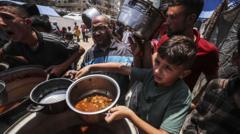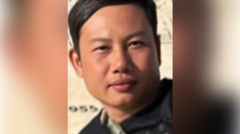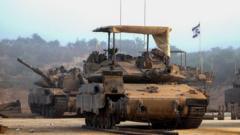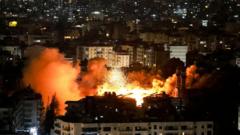A recently uncovered underground tunnel near a major hospital in southern Gaza embeds itself into the complex narrative of the Israel-Palestine conflict. This narrow passage, as reported by journalists accompanying the Israeli military, is claimed to have been utilized by Hamas for military purposes, indicating the organization's use of civilian infrastructure as a shield. Conversely, Palestinians view Israel's military actions, including bombings targeting such facilities, as blatant disregard for civilian life and welfare.
### The Deeper Seams of Conflict: An Underground Passageway in Gaza's Hospital

### The Deeper Seams of Conflict: An Underground Passageway in Gaza's Hospital
A tunnel beneath a hospital in southern Gaza reveals ongoing tensions and conflicting narratives in the Israel-Palestine conflict.
The stark contrast in interpretations underscores a broader battle of symbolism and storytelling over the conflict. On one side, the Israeli military argues that the presence of such tunnels beneath civilian facilities highlights Hamas's complicity in endangering civilian lives by using them as bases for military operations. In contrast, the Palestinian perspective sheds light on the implications of these strikes, arguing that the targeting of hospitals is a clear violation of humanitarian standards and a root cause of the conflict’s perpetuation.
The ongoing narrative is vividly illustrated by the events surrounding the death of Muhammad Sinwar, a prominent Hamas commander, purportedly killed in an Israeli strike linked to this tunnel system. This incident and the military's controlled presentation of the site serve to amplify the discord between both sides, highlighting the complexity of assessing morality and strategy in urban warfare.
As the international community observes, the repercussions of such military actions extend beyond immediate tactical outcomes into the realm of public perception and emotional response. The killing of militants in civilian areas inevitably complicates the already fragile situation and fuels both local and global discourse around the ethics of warfare, civilians' safety, and human rights.
This narrative represents just a sliver of the broader conflict dynamic, where each event is steeped in layers of history, identity, and ideology that drive both sides to articulate their own justifications while often disregarding the heavy toll of human suffering that accompanies such confrontations.
The ongoing narrative is vividly illustrated by the events surrounding the death of Muhammad Sinwar, a prominent Hamas commander, purportedly killed in an Israeli strike linked to this tunnel system. This incident and the military's controlled presentation of the site serve to amplify the discord between both sides, highlighting the complexity of assessing morality and strategy in urban warfare.
As the international community observes, the repercussions of such military actions extend beyond immediate tactical outcomes into the realm of public perception and emotional response. The killing of militants in civilian areas inevitably complicates the already fragile situation and fuels both local and global discourse around the ethics of warfare, civilians' safety, and human rights.
This narrative represents just a sliver of the broader conflict dynamic, where each event is steeped in layers of history, identity, and ideology that drive both sides to articulate their own justifications while often disregarding the heavy toll of human suffering that accompanies such confrontations.


















